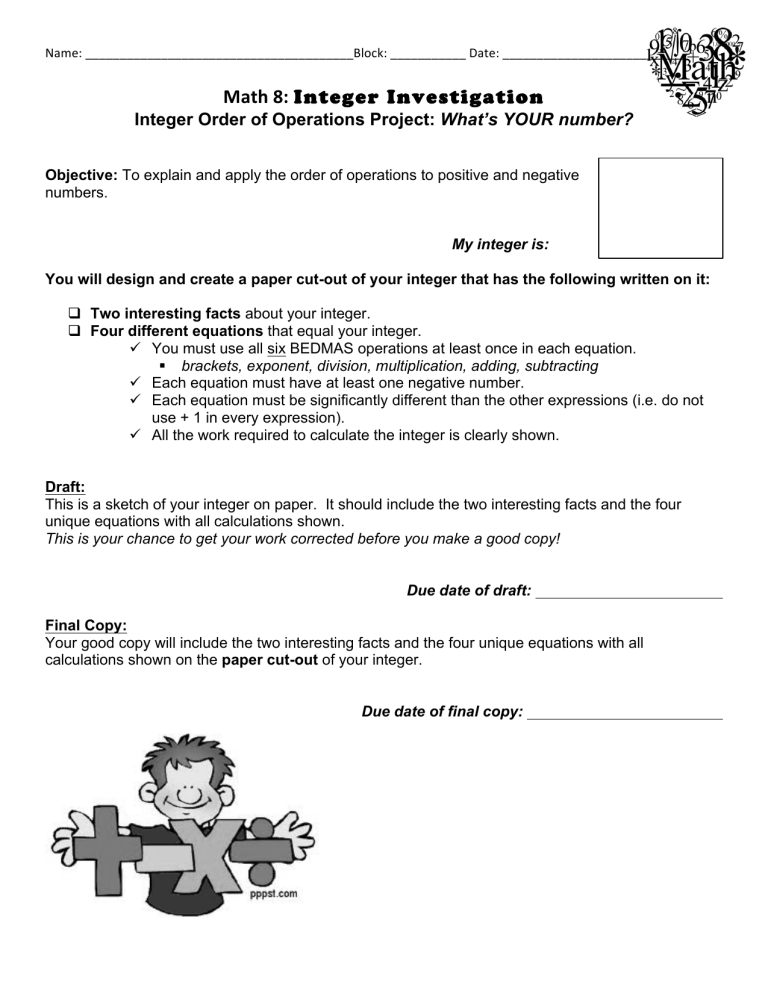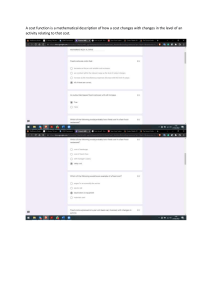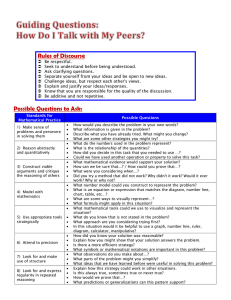
Name: _______________________________________Block: ___________ Date: ___________________________ Math 8: Integer Investigation Integer Order of Operations Project: What’s YOUR number? Objective: To explain and apply the order of operations to positive and negative numbers. My integer is: You will design and create a paper cut-out of your integer that has the following written on it: q Two interesting facts about your integer. q Four different equations that equal your integer. ü You must use all six BEDMAS operations at least once in each equation. § brackets, exponent, division, multiplication, adding, subtracting ü Each equation must have at least one negative number. ü Each equation must be significantly different than the other expressions (i.e. do not use + 1 in every expression). ü All the work required to calculate the integer is clearly shown. Draft: This is a sketch of your integer on paper. It should include the two interesting facts and the four unique equations with all calculations shown. This is your chance to get your work corrected before you make a good copy! Due date of draft: Final Copy: Your good copy will include the two interesting facts and the four unique equations with all calculations shown on the paper cut-out of your integer. Due date of final copy: Name: _______________________________________Block: ___________ Date: ___________________________ Criterion B: Investigation Patterns (0) Beginning (1-­‐2) I have not I am able to: achieved a apply, with teacher support, standard mathematical problem-­‐ described by solving techniques to any of the discover simple patterns descriptors to the right. state predictions consistent with patterns. Criterion C: Communicating (0) Beginning (1-­‐2) I have not I am able to: achieved a use limited mathematical standard language described by any of the use limited forms of descriptors mathematical representation to the right. to present information communicate through lines of reasoning that are difficult to interpret. Developing (3-­‐4) I am able to: apply mathematical problem-­‐ solving techniques to discover simple patterns suggest relationships and/or general rules consistent with findings. Accomplished (5-­‐6) Exemplary (7-­‐8) I am able to: I am able to: select and apply select and apply mathematical problem-­‐ mathematical problem-­‐ solving techniques to solving techniques to discover complex patterns discover complex patterns describe patterns as describe patterns as relationships and/or general relationships and/or general rules consistent with findings rules consistent with correct findings verify these relationships and/or general rules. verify and justify these relationships and/or general rules. Developing (3-­‐4) I am able to: use some appropriate mathematical language use different forms of mathematical representation to present information adequately communicate through lines of reasoning that are able to be understood, although these are not always clear adequately organize information using a logical structure. Accomplished (5-­‐6) Exemplary (7-­‐8) I am able to: I am able to: usually use appropriate consistently use appropriate mathematical language mathematical language usually use different forms of use different forms of mathematical representation mathematical representation to present information to consistently present correctly information correctly move between different move effectively between forms of mathematical different forms of representation with some mathematical representation success communicate through lines communicate through lines of reasoning that are of reasoning that are clear complete and coherent although not always coherent or complete present work that is consistently organized using present work that is usually a logical structure.* organized using a logical structure. • Boxed final answer in simplest form • Vertical format • Line up equal signs • Calculations showing all steps. *For this assignment, work that is organized using a logical structure must contain Command Terms for Mathematics Apply -­‐ Use knowledge and understanding in response to a given situation or real circumstances. Use an idea, equation, principle, theory or law in relation to a given problem or issue. Communicate -­‐ Express oneself in such a way that one is readily and clearly understood. Convey information about the exchange of thoughts, messages, or information through, for example, speech, signals, writing or behaviour. Demonstrate -­‐ Prove or make clear by reasoning or evidence, illustrating with examples or practical application. Describe -­‐ Give a detailed account or picture of a situation, event, pattern or process. Discuss -­‐ Offer a considered and balanced review that includes a range of arguments, factors or hypotheses. Opinions or conclusions should be presented clearly and supported by appropriate evidence. Explain -­‐ Give a detailed account including reasons or causes. Identify -­‐ Provide an answer from a number of possibilities. Recognize and state briefly a distinguishing fact or feature. Justify -­‐ Give valid reasons or evidence to support an answer or conclusion. Prove -­‐ Use a sequence of logical steps to obtain the required result in a formal way. Select -­‐ Choose from a list or group. Solve -­‐ Obtain the answer(s) using algebraic and/or numerical and/or graphical methods. State -­‐ Give a specific name, value or other brief answer without explanation or calculation. Suggest -­‐ Propose a solution, hypothesis or other possible answer. Use -­‐ Apply knowledge or rules to put theory into practice. Verify -­‐ Provide evidence that validates the result


